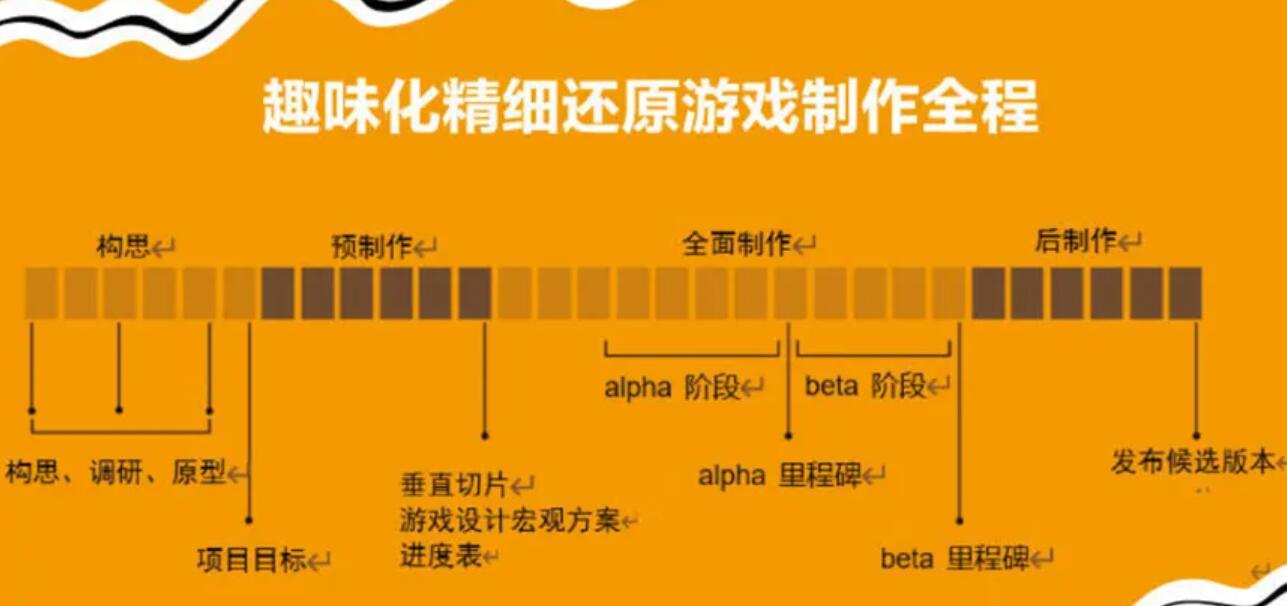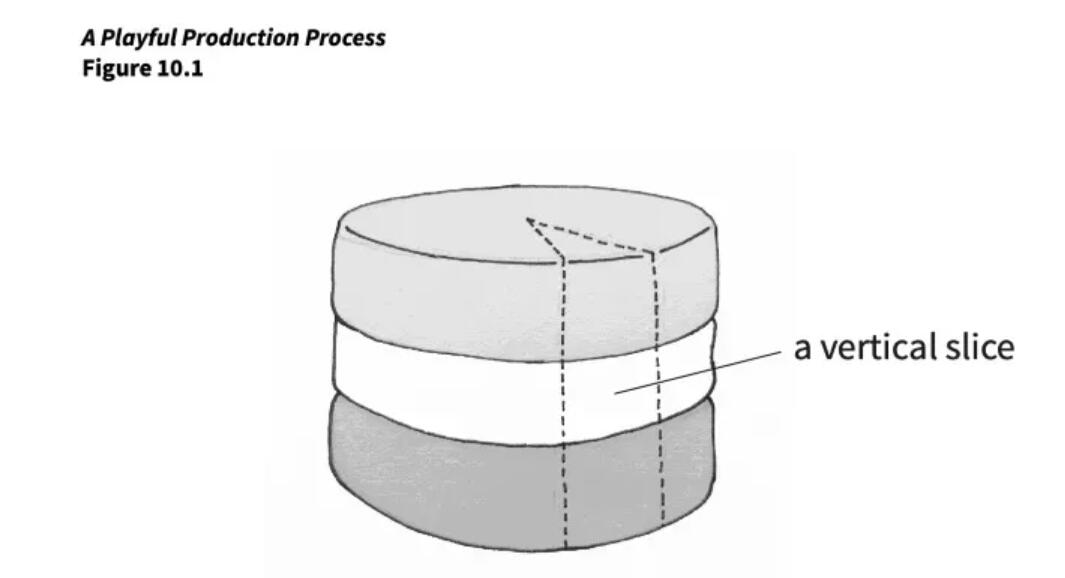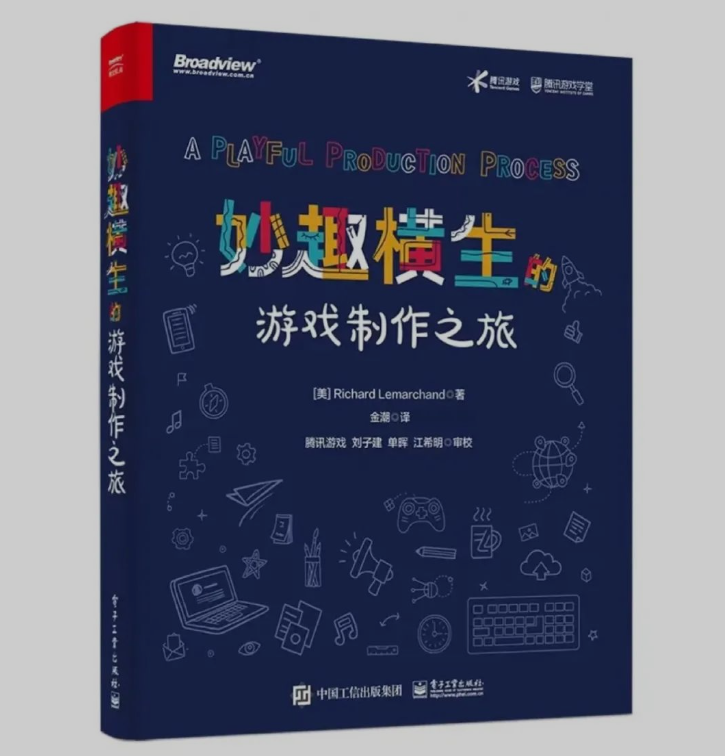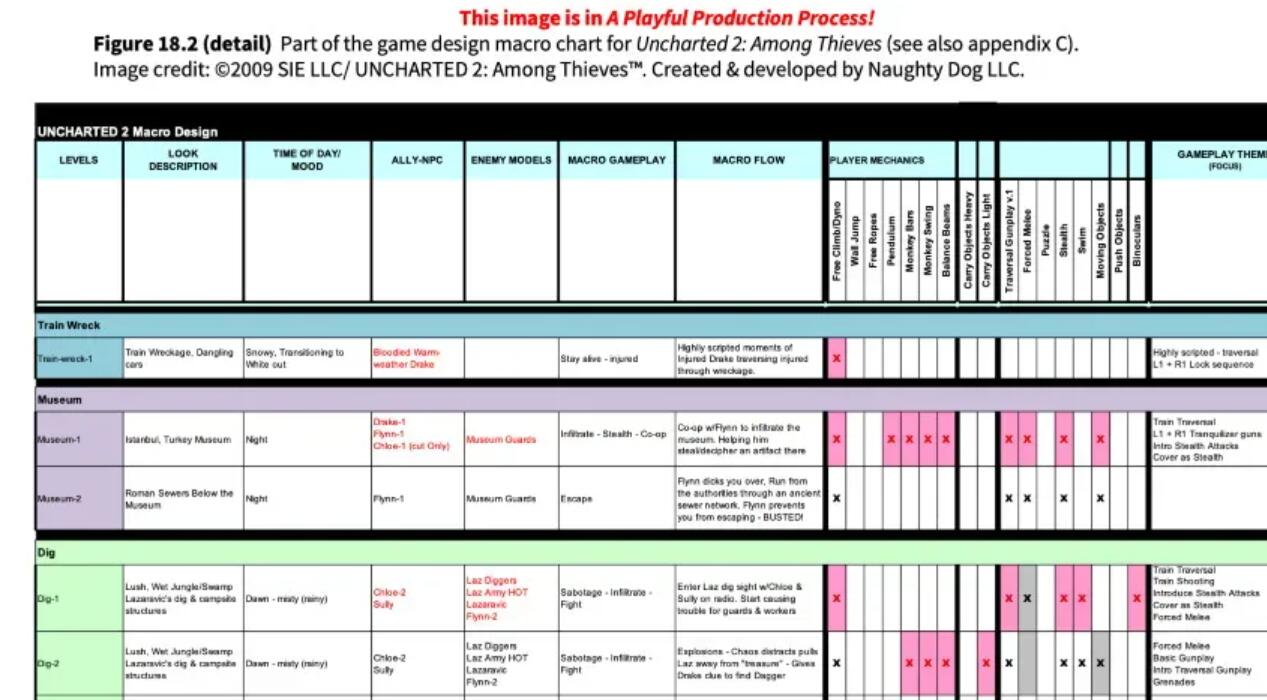位于美国加利福尼亚州洛杉矶的南加州大学,拥有着全美乃至世界排名第一的游戏设计专业,在该专业授课的导师,多数都来自游戏专业资深的从业者,比如《神秘海域》系列传奇游戏设计师 Richard Lemarchand,便是其中之一。
Richard Lemarchand曾任顽皮狗前首席游戏策划,参与过《神秘海域》前3部的开发,从业10多年的3A游戏制作经历,让他积累下了足够的游戏开发经验。而在10年前,他选择投身于游戏教育行业,加入南加州大学游戏设计系任职,如今已是电影艺术学院互动媒体和游戏专业的副教授。

南加州大学电影艺术学院副教授Richard Lemarchand
在南加州大学游戏设计专业任职10年后,Richard Lemarchand基于自己的游戏开发制作经历与教学经验,编写了一本中文译名为《妙趣横生的游戏制作之旅》的游戏专业指导手册,来当作授课教材与从业者指导书。
恰逢《妙趣横生的游戏制作之旅》国内发售之际,游戏日报联系邀约到Richard Lemarchand,就本书的一些编写思路与南加州大学游戏设计专业的教学模式进行了交流。
在《妙趣横生的游戏制作之旅》中,Richard Lemarchand以自身参与《神秘海域》系列作品时所积累的经验出发,对当下游戏开发环节存在项目管理杂乱等问题进行剖析,将游戏设计的创意与有效项目管理联系起来,把项目分为构思、预制作、完整制作和后期制作四个阶段,向读者传授如何从头到尾完成一个出众的游戏项目。

Richard Lemarchand所说的游戏项目4个制作阶段
Richard Lemarchand认为,预制作是一个游戏项目最重要的阶段,很多时候出现项目管理问题都是因为预制作没有做好,不过采访中他也向游戏日报表示,实际开发制作并不是死板的盲目遵循制定好的计划,应该将“将变化视为机会,而不是危机”。
除了基于《妙趣横生的游戏制作之旅》这本书谈游戏制作经验分享外,游戏日报还与Richard Lemarchand交流了一下南加州大学的教学模式,包括不同专业所招收的学生类型,不同学历的教学内容以及国内游戏行业从业者,想要去该专业深造能够选择的专业等等。

第九届游戏行业金口奖新增面向全球高校游戏制作团队的【2022年优秀未来游戏制作团队奖】,参与奖项评选有可能获得专属奖金、国内游戏游戏行业知名制作人/专家点评解惑以及游戏公司校招/实习直通机会,欢迎更多优秀高校未来游戏人携项目参与报名,有兴趣的可以联系游戏日报,加入未来游戏人社群。
本期嘉宾为南加州大学电影艺术学院副教授的Richard Lemarchand。
具体采访内容整理如下(附英文原版):
游戏日报:感谢接受游戏日报采访,您是处于怎样的想法,选择去撰写《妙趣横生的游戏制作之旅》这本书,从开始撰写到最终完成花了多长时间?
Richard Lemarchand:我之所以选择写《妙趣横生的游戏制作之旅》这本书,是因为在我的职业生涯中,从才华横溢的同事和导师那里收集了很多关于游戏设计和项目管理的知识。这些知识虽然被部分开发人员所熟知,但并没有被广泛传播,也没有全部写在同一本书上。
我在顽皮狗和水晶动力等工作室担任 3A 游戏首席设计师已有 20 年,我现在在洛杉矶南加州大学任教,过去的10年里,我为了在中级设计和制作课程之中去教授这些方法与知识,开发了许多材料。
因此我想要一本专为这些课程的教科书,这些课程也可以是在职业生涯的每个阶段为开发人员提供指导的专业手册,最简单的方法便是由我自己来写这本书! 我预感这种类型的书籍需求会非常大,而我的直觉似乎是正确的,对这本书收到的所有积极反馈意见感到非常荣幸和欣慰。
由于我对整个主题类型的项目非常熟悉,基于自己在游戏行业和学术界的这两份事业,整本书的创作对我而言算是顺手拈来,从编写第一章大纲到完成最终草案,只花了大约18个月的时间。

《妙趣横生的游戏制作之旅》
游戏日报:书中您将游戏制作分为四个阶段,其中预制作是项目中最重要的阶段,那么是否所有的游戏都有必要去进行预制作?
Richard Lemarchand:对,相信对于每款游戏而言,有一个执行良好的预制作非常重要。正如我的朋友兼导师马克·塞尔尼(Mark Cerny)在2002年“DICE峰会”上所说的那样,顽皮狗和Insomniac等工作室使用的游戏设计和制作的方法模型:我相信,毫不夸张的说,游戏开发中有80%的的错误是在预制作过程中已完成或未完成的事情直接导致的结果。
游戏开发人员通常会遇到许多与游戏边界相关的问题,在他们试着去构建游戏整体架构时,几乎所有开发人员们都会面临着一个相同问题——那就是这个项目难度的可操控性,所以要在发行前有足够的时间和预算,来合理的去创造和打磨游戏。
然而,当我们首次使用预制作,来通过创建一个“垂直切片”揭示游戏核心设计时,这些问题就消失了。然后,我们可以以一个称为“游戏设计宏观方案”的简短、有效的游戏设计文档的形式,为我们的游戏创建一个计划,它可以用于安排游戏的制作流程。这些技巧在我的书中都有详细描述。
游戏日报:当游戏开发过程中,如果遇到突发事件打乱了预制作阶段的“游戏设计宏观方案”,该怎样去调整?
Richard Lemarchand:这是一个好问题,实际上大家都能预料到,几乎每个项目都会有意外的事情发生,这些事情通常会扰乱或破坏原有的计划。大家要记住,创建一个游戏设计宏观方案并不是制定一个严格的计划,让我们在制作游戏的全过程去盲目地遵循,这更像是制定一个合理且实用的普通计划,如果我们遵循它,它将提供足够的时间来处理意外发生的事情。
正如我在书里面提到的那样,我们应该“将变化视为机会,而不是危机”。这意味着我们制定的每个计划,都必须能够适应意外事件的发生。美国有句俗语:“当生活给你柠檬时,你得把它做成酸甜可口的柠檬汁”。

游戏设计宏观方案
游戏日报:您所著的《妙趣横生的游戏制作之旅》一书与日常教学有哪些联系?
Richard Lemarchand:由于我每个学期都在南加州大学给学生们教授中级设计和制作课程,所以这本书和日常教学有着深厚的联系。说实话,给学生派发自己参与编写的教科书是一种很奇怪的感觉,因此我总是很谦虚的让学生们阅读相关章节。 比较欣慰的是,我在书中加入了一些笑话和我在游戏行业经历过的一些故事,以此来保持内容的趣味性。
游戏日报:当初是处于怎样的考虑,选择加入到南加州大学游戏专业任教?目前主要负责哪方面教学工作?
Richard Lemarchand:在加入顽皮狗之后不久,我就开始在南加州大学游戏中心做义务讲座,向他们讲述我们在工作室的游戏开发过程。后来,我开始辅导MFA学生,指导他们在第三年的论文项目,最终我满怀热情的完成了这项任务,以至于我们项目的创始人之一特雷西·富勒顿教授(《游戏设计工作坊》作者)认为我会成为一名优秀的游戏设计教授。
虽然我可以一直待在顽皮狗并且有着不错的收入和职业前景,但我依然想做出一些改变,而不是这样安然度日。我想把更多的时间花在对游戏开发中的文化艺术,以及游戏开发艺术工艺的哲学性思考上。于是在2012年,我成为了一名专职教授,现在很高兴地说,南加州大学游戏设计专业给了我充裕的时间,让我能够完成这些工作,并且还可以做更多事情。
游戏日报:南加州大学在游戏人才培养方面,主要是培养什么类型的人才?针对不同的学历阶段,分别去培养学生哪方面的能力?
Richard Lemarchand:当然,我们培训学生的游戏开发“硬实力”技能:软件工程、游戏引擎使用、艺术、动画和音频制作、游戏设计、游戏故事讲述、游戏制作等等。
但是,我们也非常关注游戏开发的“软实力”技能:良好的沟通和协作能力、和同事相处的能力、充当临时领导者的决策能力,以及在突发情况下,听取并且基于大家的想法来快速解决问题的能力。这些软实力与硬技能同样重要,两者相辅相成,从而使我们的学生能够制作世界一流的游戏。
我们专业中的在校生和毕业生都学到了许多相同的技能,当然,研究生会将他们学习到的技能提升到更高水平,也可能在特定领域获得更高的专业化技能。

游戏日报:南加州大学游戏专业每年会招收多少学生?这些学生想要进入该专业学习,需要具备哪些条件?
Richard Lemarchand:最近,南加州大学游戏设计专业计划扩大招生范围,现在每年招收150名本科生和70名研究生,所对应的学位各不相同。南加州大学电影艺术学院提供的IMGD学位中,我们正在招收设计、游戏文案和艺术创作倾向的新生;对于南加州大学维特比工程学院提供的计算机科学(游戏)学位,会招收拥有一定技术、逻辑和数学能力的学生。
但在这两个专业,我们都在寻找一些渴望制作数字或物理游戏,以及也对其他艺术和文化感兴趣的复合型人才。我们喜欢那些不仅仅对视频游戏感兴趣的候选人,因为我们知道,游戏的最佳灵感往往来自游戏之外!
游戏日报:如果一位中国游戏行业的从业者,想要攻读南加州游戏专业硕士或者博士学位,有哪些渠道能够实现?
Richard Lemarchand:在此,我本人非常鼓励在中国游戏行业的任何从业者,都可以考虑申请南加州大学的游戏设计专业,无论是IMGD MS/MFA学位还是CS(游戏)MS学位。这两门课程都适合寻求获得经验、磨练技能、拓展游戏设计技能的专业人士,同时还可以与一些世界级项目中的导师和顾问建立联系。
游戏日报:对游戏人才的培养上,您觉得目前东西方的差异点在哪?
Richard Lemarchand:在当前的高等教育中,游戏设计和发展教学仍然处在起步的阶段,我们算是北美地区启动相关教育计划最早的学校,但也仅仅只有20年。当然,现在在亚洲的大学中,也有许多优秀的游戏开发学位课程,包括清华大学深圳校区的新IMDT计划,南加州大学游戏设计专业正与清华大学和腾讯游戏学堂进行合作等等。
最后,我认为东方和西方游戏教育的方式上,有很多相似之处:我们都专注于理论和实践的正确结合,以及教导什么最能帮助学生,让他在国内或者国际上取得不错成就的方法,同时也激励他们推动游戏设计的边界和更多的可能性。
游戏日报:您最喜欢或者最关注的中国游戏产品是哪一款?为什么会喜欢或者关注它?
Richard Lemarchand:我对中国游戏现状感到非常开心,通过和腾讯的咨询工作,也了解到了在中国有着数量庞大的游戏开发人员。 当然,我也是许多腾讯游戏的粉丝,例如《王者荣耀》国际版和《逆战》等,我也对腾讯NExT工作室的创新作品(例如《只只大冒险》和《不可思议的皇冠》)非常感兴趣。 我非常期待在未来几年看到从中国出圈,火到全球的游戏作品!
以下为英文原文:
Q1:Thanks for the interview of Game Daily. Why did you choose to write the book " A Playful Production Process: For Game Designers (and Everyone)" and how long did it take from start to finish?
Richard Lemarchand:I chose to write A Playful Production Process because over the course of my career, I had gathered up a lot of wisdom from my talented colleagues and mentors about integrating game design and game project management. This wisdom, while known by some developers, was not that widely shared, and it was certainly not written down all in one place.
Having spent two decades as a lead designer in triple-A games at studios like Naughty Dog (Uncharted) and Crystal Dynamics (Soul Reaver, Gex), I now teach at the University of Southern California in Los Angeles. Over the last ten years, I developed a lot of materials to teach these approaches in my USC Games intermediate design and production classes.
I wanted a textbook for those classes that could also serve as a professional manual for developers at every stage of their career, and the simplest approach was the write the book myself! I had a sense that there was a wider demand for a book of this type, and I seemed to have been correct, based on the warm reception that PPP has received around the world! I’m very honored by and grateful for all the positive feedback the book has received.
Because I was so familiar with the subject matter, from my twin careers in industry and academia, the book almost wrote itself, and only took about 18 months to complete, from writing the first outline, to finishing the final draft.
Q2:In the book, you divide game production into four stages, of which preproduction is the most important stage in the project, so is it necessary for all games to go for preproduction?
Richard Lemarchand:Yes, I believe that it’s very important for every game to have a well-executed preproduction period. As my friend and mentor Mark Cerny tells us in his influential DICE 2002 talk about the “Method” model of game design and production used at studios like Naughty Dog and Insomniac Games: “I believe that 80% percent—I'm not exaggerating—of mistakes in game development are a direct result of things that were done or not done in preproduction.”
Game developers experience many problems related to the “scope” of their games—the size and complexity of the game they are trying to build. All game developers face difficulty in bringing our projects under control, in terms of having sufficient time and budget to properly create and polish our games before release.
However, these problems melt away when we first use preproduction to uncover the true design of the core of our games by creating a “vertical slice.” Then we can create a plan for our games in the form of a short, effective game design document called a “game design macro.” This gives us a plan that is specific enough to be useful in creating and scheduling our game’s creation, but not so specific that we waste time in creating it. These techniques are described in detail in my book.
Q3:During the game development process, if there is an unexpected event that disrupts the "game design macro plan" in the preproduction stage, how to adjust it?
Richard Lemarchand:That’s a good question, and in fact we can anticipate that almost every project will have several unexpected events that disrupt the plan according to the game design macro! Creating a macro is not about making a rigid plan that we follow blindly as we build the game in full production. It’s more like creating a general plan to follow that is reasonable and practical, and that, if we follow it well, will give us the time we need to deal with unexpected events.
As my book mentions, the adage used to describe the spirit of Agile development is very useful: we should “treat change as an opportunity, rather than a crisis.” That means that every plan we make must be able to be adapted to deal with the unexpected. As they say in the United States: “when life gives you lemons, make lemonade!”
Q4:What is the connection between your book" A Playful Production Process: For Game Designers (and Everyone)" and your daily teaching?
Richard Lemarchand:Because I teach our intermediate design and production class every semester at USC to a new cohort of students eager to move beyond the beginner stage of their learning, my book has a deep connection to my daily teaching! It’s a strange feeling, to assign a textbook that one has written oneself, and I always feel very humble in asking my students to read chapters that I have written. I’m glad that I included a few jokes and some stories from my time in the industry to keep things interesting…
Q5:What kind of consideration make you choose to join the University of Southern California to be a teacher? What aspects of teaching are you responsible for in the game major now?
Richard Lemarchand:I had begun volunteering at USC Games soon after I joined Naughty Dog, visiting to give talks to students about the development processes we used at the studio. Later I began mentoring MFA students as they directed year-long thesis projects in their third year of study, and apparently I approached that task with such enthusiasm that one of our program’s founders, Professor Tracy Fullerton (author of Game Design Workshop), thought that I would make a good professor of game design.
While I could happily have stayed at Naughty Dog forever, I was keen to make a change that would allow me to spend more time thinking philosophically about games as art and culture and about game development as a maturing artistic craft, and I became a full-time professor in 2012. I’m happy to say that my time in the USC Games program has allowed me to do all that, and much more besides.
Q6:What kind of talents does USC mainly develop in game talent training? aiming at different educational levels, what kind of ability should undergraduate, master's students master?
Richard Lemarchand:Of course, we train our students in the “hard” skills of game development: software engineering, game engine usage, art, animation, and audio assets production, game design, game storytelling, game production, and much more.
But we also have a strong focus on the “soft” skills of game development: the ability to communicate and collaborate well, getting along with each other easily, acting as effective leaders and resolving conflict as it arises, building on each other’s ideas to reach excellence more quickly and with less stress. These soft skills are just as important as the hard skills, and work in concert with them to allow us to make world-class games.
Undergraduates and graduates in our program learn many of the same skills, but of course graduate students take their studies to a higher level, and may also gain a higher degree of specialization in particular fields.
Q7:How many students does the USC games major enroll each year? What are the requirements for these students to enter this major?
Richard Lemarchand:The USC Games program has recently expanded its admissions, and each year we now enroll around 150 undergraduates and 70 graduate students. The requirements vary across the degrees we offer. In the IMGD degrees offered from the USC School of Cinematic Arts we look for a predisposition to design, game writing, and artmaking. For the Computer Science (Games) degrees offered in the USC Viterbi School of Engineering we seek some strong technical, logical, and mathematical skill. But across both degrees we look for a mixture of some proven desire to make either digital or physical games, and some other artistic and cultural interests. We like candidates who are into more than just videogames, because we know that the best inspirations for videogames often come from outside of games!
Q8:If a practitioner in the Chinese game industry wants to pursue a master's degree in Southern California games, how can he achieve ?
Richard Lemarchand:I’d encourage any practitioner in the Chinese game industry to consider applying to the USC Games program, either the IMGD MS/MFA degree or the CS (Games) MS degree. Both courses are appropriate for early-career professionals seeking to gain experience, hone their skills, and widen their game design practice, while making new industry connections with mentors and advisors in our world-class program.
Q9:What do you think is the difference between the East and the West in the training of game talents?
Richard Lemarchand:The teaching of game design and development in higher education is still quite new—our program is among the oldest in North America, and we are only twenty years old. Of course, there are now many excellent degree programs in game development in Asia, including the new IMDT program at Tsinghua University’s Shenzhen campus. USC Games is enjoying collaborating with Tsinghua and the Tencent Institute of Games in teaching their incoming students.
I think that there are perhaps more similarities than differences in the way that games are taught in the East and the West: we are all focused on the correct combination of theory and practice, and on teaching what will best aid students to advance in their careers, both domestically and internationally, while also inspiring them to push forwards the boundaries and possibilities of game design.
Q10 :What is your favorite or most concerned Chinese game? Why do you like it or pay attention to it?
Richard Lemarchand:I am very excited about the Chinese game scene, and I have come to know many Chinese developers through my consulting work with Tencent. Of course, I am a fan of Tencent’s wonderful blockbuster games like Honor of Kings and Assault Fire, and I’m also very interested in the innovative work of Tencent’s NExT Studios, like Biped and Crown Trick. I’m very much looking forward to seeing the great titles that are destined to emerge from China in the coming years!

